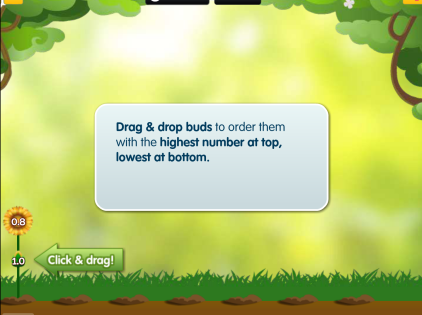Flower Power Math Game Play Strategies
The Best Way to Grow:
Tell Flower Power math game learners not to grow cheap flowers but to grow the stems and let them pollinate, so they progress quickly to more valuable flowers and fungi. Let them know that they should balance pollination and harvesting and attempt to keep at least six high-value stems growing at the same time.
Work Left to Right:
It is best if the students work left to right, ordering one bloom on each stem in sequence, taking extra care when ordering fungi.
How to Use the Bumper Harvest:
Learners will do well if they use the Bumper Harvest as often as possible, especially for high-value flowers. For the most efficient harvests, they should cut stems from left to right. As soon as the end-of-day bell tolls, they should harvest all of the flowers in one Bumper Harvest.
Compare Buds Between Whole Numbers:
When comparing buds, have learners think about which whole numbers a bud is between. For example, 2¼ is between 2 and 3.
Is the Fraction Greater or Less than ½?
Encourage students to think about whether a fraction part of a number is greater than or less than a half. For example, ¾ is greater than 1½.
Thinking of Mixtures of Fractions and Decimals as All Fractions or All Decimals:
When there is a mixture of fractions and decimals, encourage learners to think of them all as decimals or all as fractions. They need to be able to change numbers from fractions to decimals and back to do this. For example, ¾ = 0.75 and 1.25 = 1¼.
Using Standard Conversions:
It’s useful for learners to know what standard fractions are as decimals: 1/10 = 0.1, 1/5 = 0.2, ¼ = 0.25, ½ = 0.5
Finding Common Denominators:
Encourage learners to compare two fractions using a common denominator. For example, if they are trying to compare 11/12 and 5/6, have them use the common denominator of 12 – 5/6 equals 10/12 and so 5/6 is less than 11/12.






